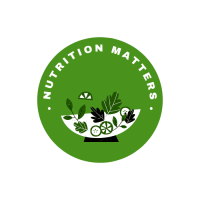The health advantage of local food
I grew up with an early spring to late fall daily farmer’s market, except for Sundays, and a big bountiful garden. Also, fruit trees and berry bushes were scattered all over our yard. It was my realm of wonder, and, as I realized many years later, just as wonderful a realm for my budding microbiome, with whom I was forging a relationship like no other.
At the market, I would stroll through heaps of fresh produce with my mom. Watermelon had a spacial place in my heart. I thought that if life came with mountains of fresh watermelon, I really did not care what else it threw at me. OK, I have somewhat revised my belief on that, but I have not given up on finding the best watermelon I could. And I am happy to say that I did. (The go to magical spot: the farmer’s market and the few small stores selling local fare in Kamloops.)
Imagine the possibilities
Close your eyes for a few seconds and imagine the market: a sea of colours and smells of fresh produce, the bustling noises of a bright and busy Saturday morning and the promise of tasting those first raspberries. Or apples. Or, in my case, crunchy salad turnips.
For me, it’s the same now as it was then.
I love our local farmer’s market as much as I did back when I was a kid.
Based on how quickly some items sell at the market on a given day, we could assume that everyone shops there. However, a veteran farmer friend who’s been there since the early days, estimates that around 10 percent of the local peeps shop at the market regularly. If that.
So at this point you may ask if it’s realistic that we’d all shop there for all our food needs. Is there enough to sustain that kind of demand? Well, if we’re talking a whole city, then no. And of course we all complement with buying from the store – that’s also what sustains our community and ensures jobs.
However, when more people shop at the market it encourages more local farming, which means more better quality and fresher food, plus a thriving local economy.
Build your pie and eat it too
The magic word is ‘complementing’. It’s like a pie with slices that determine how well we do health-wise, and community-wise through the things we encourage: tending to our own gardens or balcony gardens when possible, shopping at the market or at the small stores that carry local fare, and heading to the big stores for other needs.
If you’re considering adjusting the size of those slices for yourself and the greater good, here’s my arguments for why local and seasonal, when possible, is best.
- Locally produced food travels from the farm to the market and it’s likely been picked the night before or that early morning. If produced in your garden… well, there’s but a few steps plus a thriving environment for pollinators (more on this in my blog)
- Consuming seasonal, locally produced food encourages regional small-scale farming, which contributes to a thriving local economy, which carries two big words within: sustainable and long-term.
- While eating exclusively seasonal may not be practical, relying on seasonal produce during spring, summer, and fall provides our bodies, gut microbes included, with the best foods of all during their peak season.
